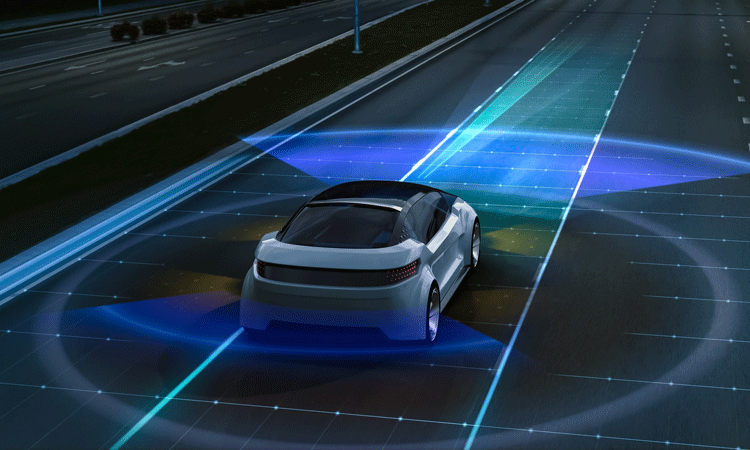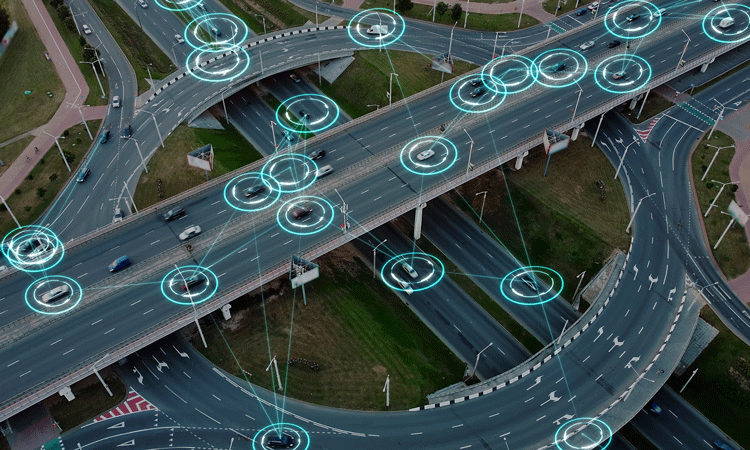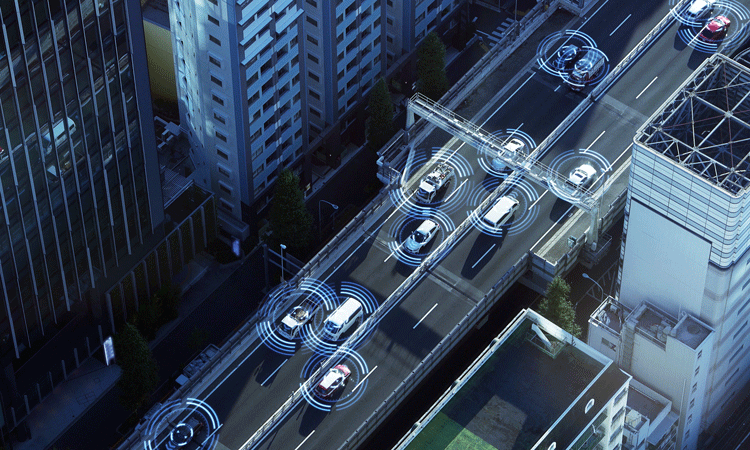Driving into the future: Michigan’s vision for connected and autonomous mobility
- Like
- Digg
- Del
- Tumblr
- VKontakte
- Buffer
- Love This
- Odnoklassniki
- Meneame
- Blogger
- Amazon
- Yahoo Mail
- Gmail
- AOL
- Newsvine
- HackerNews
- Evernote
- MySpace
- Mail.ru
- Viadeo
- Line
- Comments
- Yummly
- SMS
- Viber
- Telegram
- Subscribe
- Skype
- Facebook Messenger
- Kakao
- LiveJournal
- Yammer
- Edgar
- Fintel
- Mix
- Instapaper
- Copy Link
Posted: 7 March 2024 | Jean Ruestman - Michigan Department of Transport | No comments yet
Jean Ruestman, Administrator of the Office of Passenger Transportation at the Michigan Department of Transportation (MDOT), spoke with Intelligent Transport’s Halimah Haque about the transformative impact of connected and autonomous mobility and its integral role within Michigan’s forward-looking transportation strategy.


Could you please share with us the role that connected and autonomous mobility plays within the Michigan Department of Transportation’s transport strategy?
Connected and autonomous mobility really permeates all areas of our department, which is a great thing because, in the past, we’ve often worked in silos. There’s highways, bridges, rail, passenger buses and such; but technology, because it permeates all of those things, has really made us think more system-wide. Technology, in general, has helped us to become one Department of Transportation, all working towards the common goal of moving people.
At the end of the day, the question is, how must we plan to deliver and accommodate more innovation in a safe way?”
When it comes specifically to connected and automated vehicles (AVs), there are many areas within MDOT that are working collaboratively, and on their own, on different types of projects. My area, the Office of Passenger Transportation, where we provide funding and technical support for all of the public transit agencies across the state, has become involved with a few different collaborative groups that are working on developing and testing automated vehicles. The Automated Bus Consortium is the one that I’d say brought us together. And then, we are also collaborating with other state departments whose focus is on mobility. But we want to bring more mobility companies, and the private sector, into our state. We’re saying, “Hey, we want better transportation for the citizens in our state, and we want to know how these types of vehicles fit in.”
For us, it’s about testing out what types of automation are beneficial, according to where the industry is right now, and considering what we can actually plan into our strategy. In other parts of the department, it’s about asking, what kind of infrastructure do we need to support connected and automated vehicles? As we’re designing roadways, that thought is always there. What do we need to do when designing this road to make sure that it can meet the needs of connected and automated vehicles in the future?
We actually have a partnership with an organisation called Cavnue, within which we are working on a segment of roadway – or, a corridor – that will be a living lab, if you will, for different types of connected and automated technology. We are purposely planning and designing that stretch of roadway to accommodate automated buses and cars, as well as connected vehicles. At the end of the day, the question is, how must we plan to deliver and accommodate more innovation in a safe way? We can’t just implement this across the state without understanding the implications. Without doubt, having that kind of corridor and public private partnership will really help to spearhead automation in a way that benefits our department, but equally benefits the private sector, passengers, drivers and everyone involved. Connected and autonomous mobility touches everything that we do, and it has come to be at the core of our planning for the future.
From your perspective, what are some of the key societal and environmental benefits that connected and autonomous mobility can bring to the State of Michigan and beyond?
This is an interesting question, and one that I actually shared with my staff, as I was interested to see if their reaction matched my own thoughts. The first word that came out of everyone’s mouth was ‘safety’. As the Department of Transportation, safety is always a big factor for us, and we do think that connected and automated vehicles will eventually bring more safety to our roads.
We don’t want to create more congestion with these cars. We want to make sure that automation truly benefits society”
We must remember that people don’t yet know how to interact with automated vehicles. Naturally, it’s going to be a learning curve. But, still, safety will be a huge factor and its aspects will come in many different forms. We’ll see safety improvements also stem from some of the off-shoot technology of connected and autonomous mobility; for instance, all of the connected intersections that will help cars to communicate with each other.
We’ve also been undertaking joint projects concerning the matter of highways; specifically, pedestrian detection. If we can help to detect where pedestrians are – for instance, at an intersection where buses and cars perhaps can’t see the pedestrians or they are in their blind spot – then the safety benefit is obviously significant.
The other thing that my staff and I discussed was our hope that automation will bring or enable greater equity. The hope is that people who can’t drive themselves will have more access to mobility. However, we, as a state department, have a role to play in the equitable allocation of that benefit, so that it’s not just the wealthy who can afford to own or use an automated vehicle.
My hope is that, due to the nature of automated vehicles, individuals won’t need to own them; instead, they can be shared. I’ll use it, it will drop me off at my destination, then the car can go to pick up someone else. We don’t want to create more congestion with these cars. We want to make sure that automation truly benefits society, and that it uses vehicles in a more efficient way so that air quality isn’t negatively impacted. So, safety and that access and equity for society, I hope, will be the outcomes of this type of mobility.
What technical and institutional challenges need to be overcome for the successful implementation of connected vehicles in the U.S., and how is MDOT addressing these challenges?
If we’re not prepared in terms of infrastructure and policy, we’re not going to fully realise automation’s potential and benefits as the technology advances”
All of the studies into connected vehicles, again, come down to safety. Our hopes are that we learn how to use this technology/mobility in the most effective way. Where can it have the biggest impact? Realistically, it’s likely that we won’t be able to afford to introduce the infrastructure everywhere, all at once. So, we are trying to learn what the biggest impacts of connectivity are. How do we set it up, how do we build it into our infrastructure, and how do we teach people how to access it?
Equally, we also face a challenge in working through all of the policy issues, because there are some old laws that never considered, or even imagined, the introduction of connected and autonomous vehicles. What policy changes will we need to implement, so that we can take full advantage of the connected technology that’s out there, allowing vehicles to talk to the infrastructure and vehicles to talk to each other? It’s certainly a game changer, but if we’re not prepared in terms of infrastructure and policy, we’re not going to fully realise automation’s potential and benefits as the technology advances.
We also need to consider the workforce. We don’t have the workforce in place right now to develop, maintain and implement all of the technology that’s out there. So, we are very actively involved in workforce development conversations and activities. We have a training programme for engineers and such to come in and learn about what we do. We are working with universities and other state departments whose focus is on job creation and job training. It’s fair to say that we’re playing a much more active role now than we ever did before on workforce implication.


We also need to consider that this technology all relies on different pieces and parts, such as micro-chips and new equipment. A global economy is fine for sourcing some of those parts; however, we can’t be completely dependent on other countries for that – there’s got to be a balance. We have to ensure that we have the right manufacturers, the right companies within our own country. We’re trying to get a lot of them to come to Michigan to supply what we need in order to keep going.
We have seen the effects of shortages before: we could not get micro-chips during the pandemic, and we are still feeling the result. Also, for example, we are still trying to get buses that we ordered two years ago, so that we can provide safe transit to people. So, this is another element of this advanced technology that we need to figure out. This technology will be effectively useless if we cannot maintain it.
How significant is knowledge sharing in the advancement of connected and autonomous vehicle research and development?
When you think of how quickly the technology is advancing, if we don’t share information and findings with each other, it just will not happen in a timely manner to enable its continued advancement”
Knowledge sharing is the only way that we’re going to get this done. It’s for this reason that we’re so pleased to be part of the Automated Bus Consortium, bringing different agencies and states together to help to learn about a lot of things all at once. We’re each willing to take on different aspects of the demonstrations, and we’ll put it in action in different types of settings so that we can all learn and share from each other. If MDOT felt like we had to do everything by ourselves, we’d never get it done. There is just too much to learn, too many caveats, too many variables. When you think of how quickly the technology is advancing, if we don’t share information and findings with each other, it just will not happen in a timely manner to enable its continued advancement. Sharing has really helped us to work with more state agencies, with universities and the government, because connected and autonomous vehicles touch so many.
On that note, how does MDOT plan to foster collaboration between industry, academia and other stakeholders in the development and testing of connected vehicle technologies?
We already have a lot of working groups that we’re involved with. We have joined national organisations like the American Association of State Highway and Transportation Officials (AASHTO) and the American Public Transit Association (APTA), which attract people from around the country. We’re also very involved in the Transportation Research Board, which is bringing voices together from all around the world. We also have agreements with universities to do research and demonstration projects.
We’re very public about the fact that we want to partner with people. In fact, we have a whole state department that is focused on partnering with industry. We really try. We don’t ever think that we can do it all, and we know that it takes a village. We’ve initiated a lot of those collaborations, signing Memorandums of Understanding (MoUs) or forming working groups and teams that are working across industries, across government and the private sector to come up with solutions and make sure that they are implemented in a way that makes the most sense.


What do you believe is the most significant impact of connected technology on safety and transportation, and how does it facilitate various types of connectedness to enhance the passenger experience?
Gosh, that’s a really hard question. I think the concept of connection, of all different types of connectedness, is really going to make a difference to the safety of individuals and the ability for individuals to travel by the mode(s) that they want. It can help you to understand how to get from point A to point B and move around more safely; it can enable the bus to communicate with the bus stop that people are waiting at; it can ensure that the road and your car work together; and it can make sure that intersections warn oncoming vehicles that a pedestrian, bike, scooter, or whatever it may be, is there. I think that connected technology is going to be the biggest thing for the industry in the coming years, and it’s going to enable a lot of other things to work effectively.
Looking to the future, how do you foresee connected and autonomous mobility shaping transportation and impacting the daily lives of Michiganders?
The future, for me, is a mix of all different types of traditional and technology-enabled mobility solutions that get people where they need to be, that don’t cause pollution or damage our climate”
My hope, and I think it will be a reality, is that connected and autonomous technologies will improve mobility for everyone. It will help us to accomplish that complete trip, so that people can easily get from their door to wherever they’re going, to improve their quality of life. In the past, you had buses, you had some trains and you had the roads, if you owned a car. While they seemed good, they were very limited. All of the future connected and automated vehicles, and all of the different innovations that have come out of technology, micro-transit, micro-mobility, the Transport Network Companies (TNCs) – this big mix of mobility options are what will achieve the goal of everyone getting to where they need or getting the services that they need brought to them.
The future, for me, is a mix of all different types of traditional and technology-enabled mobility solutions that get people where they need to be, that don’t cause pollution or damage our climate, that don’t make congestion worse, but actually improve it. Equally, access to socio-economic and social opportunities for all people.


Related topics
Connected & Autonomous Vehicles, Infrastructure & Urban Planning, Public Transport, Sustainable Urban Transport, Vehicle & Passenger Safety
Issue
Issue 4 2023
Related modes
Autonomous vehicles
Related cities
Michigan
Related countries
United States
Related organisations
Michigan Department of Transportation (MDOT)
Related people
Jean Ruestman








